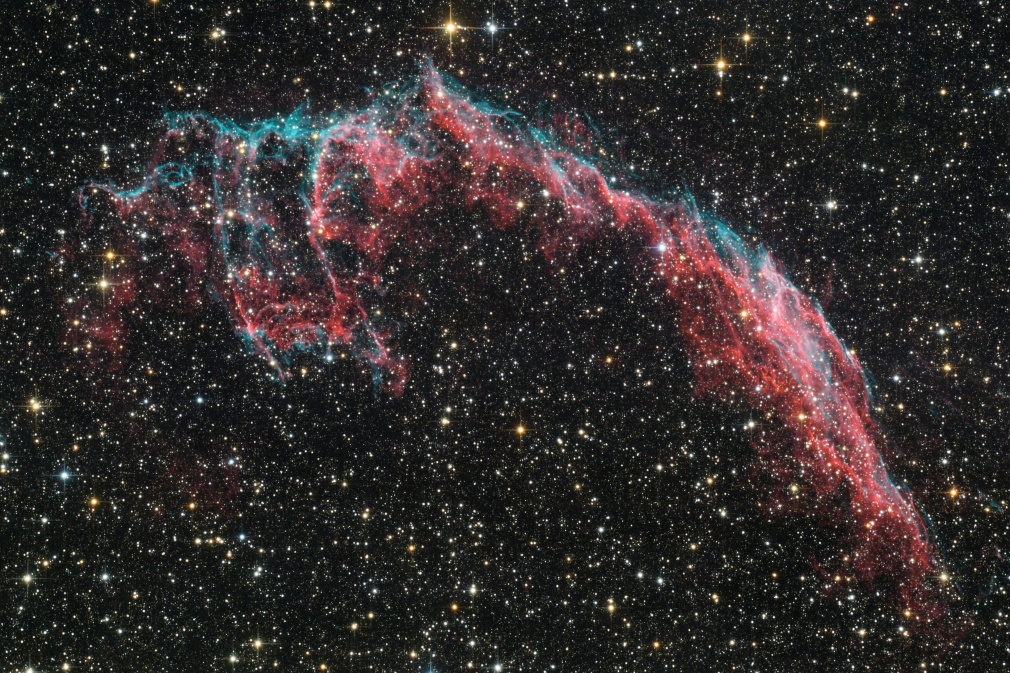The Eastern Veil Nebula, part of the larger Veil Nebula complex, is a striking supernova remnant located in the constellation Cygnus. Designated as NGC 6992 and NGC 6995, this nebula is the visible result of a massive star's explosion that occurred approximately 10,000 to 20,000 years ago. Spanning about 110 light-years, the Eastern Veil Nebula features intricate filaments of gas and dust, which glow in various colors due to the different elements they contain and the processes occurring within them. These glowing filaments are primarily composed of ionized hydrogen and oxygen, emitting red and blue light respectively, as they are energized by the shockwave from the supernova.
One of the most scientifically intriguing aspects of the Eastern Veil Nebula is its dynamic structure, which changes appearance when observed in different wavelengths of light. In visible light, the nebula displays a delicate, lace-like structure, while in X-ray and infrared wavelengths, other features become apparent, revealing different conditions and materials present. These multi-wavelength observations are essential for astronomers to understand the nebula's composition and the physical processes at play. For instance, X-ray observations can highlight regions of extremely hot gas, while infrared can reveal cooler dust structures and star formation regions.
The ongoing interactions within the Eastern Veil Nebula provide a valuable laboratory for studying the aftermath of supernova explosions and the lifecycle of stars. As the supernova shockwave propagates through the interstellar medium, it compresses and heats the surrounding material, triggering phenomena such as new star formation. Additionally, these interactions enrich the interstellar medium with heavier elements synthesized during the supernova event, playing a critical role in the galactic ecosystem. This enrichment process is crucial for the formation of planets and life, highlighting the nebula's significance in the broader context of understanding cosmic evolution.
